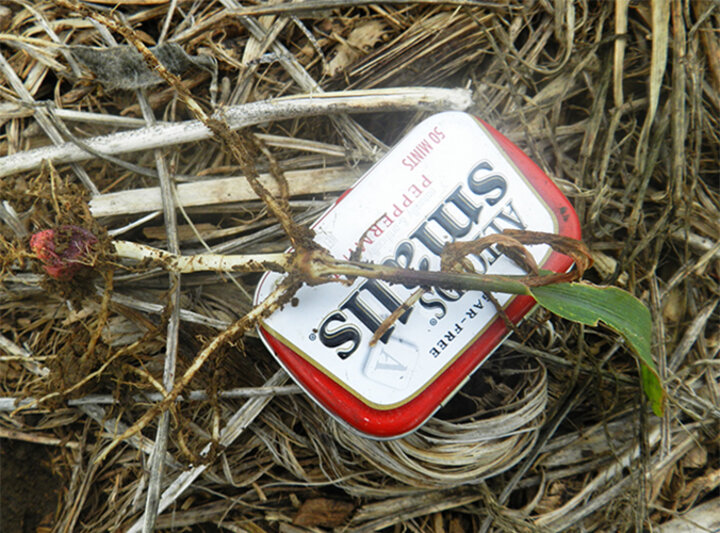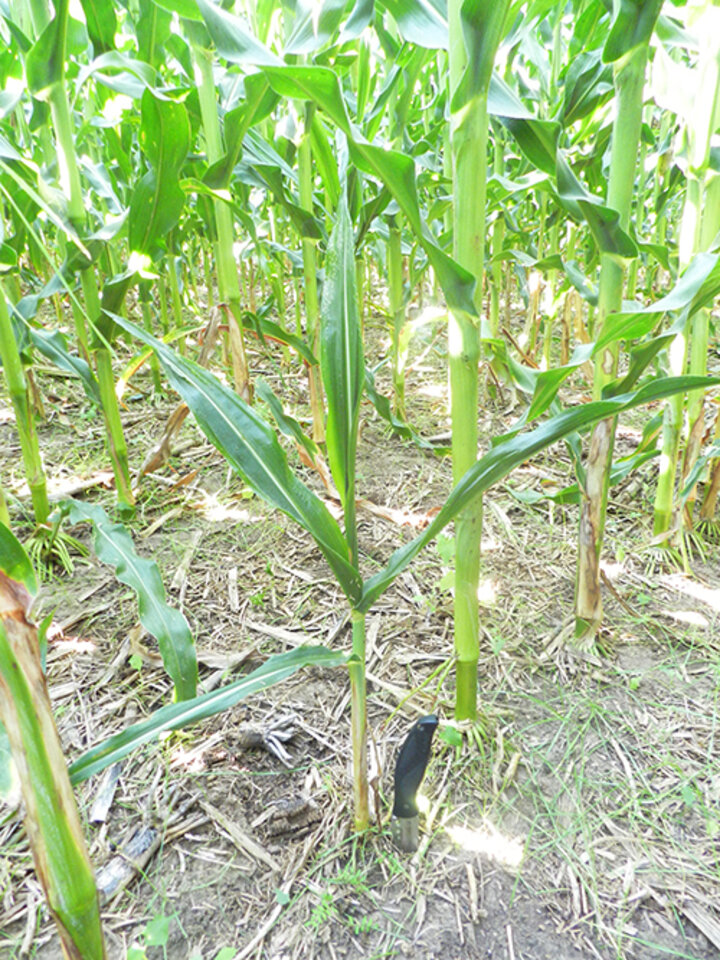

We have been tracking an unusual insect pest the past couple of years in northeast Nebraska that may be a potential concern to farmers growing corn after rye or other grass cover crops. A number of producers and crop scouts have reported stunted corn plants at V1 to V2 with brown flagging in their fields (Figure 1). Affected plants occurred singly or up to 5 in a row.
Fields affected were planted with seed from multiple companies. One field even had two hybrids. One hybrid was hit and the other had no visible signs, suggesting there may be some differences in susceptibility among hybrids. The unaffected hybrid seemed to be more vigorous under the conditions experienced at the beginning of the 2015 growing season. Reports had 5-10% of plants affected. Upon investigation the wheat stem maggot (Meromyza americana) was identified as the culprit. This insect (Figure 2) was first found in Nebraska corn after a rye cover crop in eastern Antelope County in 2005. The increase in this cover crop practice has coincided with an increase in this insect being reported.
The wheat stem maggot (WSM) is a species of Chloropid fly. These are small flies that are typically about 1/8 inch long with black and yellow markings. The wheat stem maggot overwinters in the stem of its host plants as a larva. Adults emerge in May. Two more generations will be completed in the same year; one will be in summer and the other in the fall. The eggs from the fall generation will produce the overwintering larvae for the following year. There are a number of other cultivated hosts, besides corn, including wheat, barley, rye, timothy, and oats. Uncultivated hosts include quack grass, slender wheat grass, western wheat grass, wild barley, wild rye grass, brome grass, green foxtail, and yellow foxtail.
All fields with damage had a single factor in common: a cereal grain was planted as a cover crop. Plants affected had maggots that entered the plant around the first node. The feeding activity of the maggots caused the plants to produce a gall (Figure 1). The maggots made feeding tunnels that went up through the growing point and, in the process, destroyed it. Feeding within the growing point led to the characteristic stunting and flagging of plants.
In August 2015, one of the affected cornfields was revisited (Figure 4). The plants affected by wheat stem maggot had not died; however, they were stunted and spindly in growth. Plants were three to four feet tall in a field of eight-foot tall corn. No ear was produced on these plants.


There are no known management options at this point. The pupae and larvae are both inside the stem where they would be safe from insecticide exposure. Three generations of adults and multiple weedy host plants make the adults difficult to manage. We know that infested fields have had a range of insecticide seed treatments. Seed was treated with Poncho® at a rate of 250, 500, or 1250. Given the range of treatment levels it would appear that seed treatments might not be a viable option for management of WSM.
Further investigation with crop scouts has revealed that this may become an annual occurrence, particularly in corn planted into a rye cover crop; however, it is not common. At this time, there seems to be no pattern in affected fields. Cover crop termination has been from 3-14 days or more prior to planting. It is expected that wheat stem maggot will continue to be an isolated and sporadic pest of corn.
Note: References to specific pesticides are not an endorsement of such products but are only used for educational purposes.
